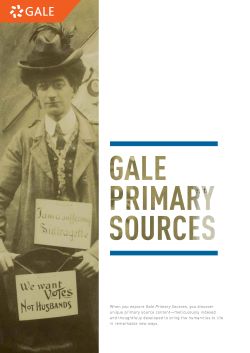Hello and welcome to the UKSG Annual Conference 2022, from all of us at Gale.
We have been hearing about the need to support diversity, equity, and inclusion (DEI) for initiatives on campus for several years now. To support libraries with this mandate, we are surfacing underrepresented histories and uncovering hidden stories with six new collections that have recently been added to the Gale Primary Sources platform.
These archives explore the stories of LGBTQ+ communities worldwide, women, Native Americans and other underrepresented communities.
“No other resource gives researchers more insights from more perspectives than Gale Primary Sources. The original, first-hand content is meticulously cross-referenced to bring facts into focus and information to life in remarkable new ways," explains Seth Cayley, vice president of global academic product at Gale.
“These new additions came from regular discussions with researchers, librarians and students who have emphasised the need to support diversity, equity and inclusion. Our work to bring these stories to life is ongoing at Gale. We are actively working on several projects that will provide a greater representation of the history of minority groups like these.”
Meet our friendly team at the Gale stand or contact them using the details below.
We look forward to meeting you, and hope you enjoy the conference!








